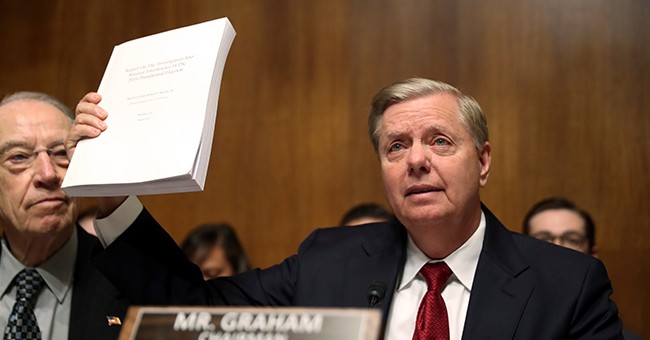Of all the scandals in which Ilhan Omar is enmeshed, one might think the Daily Mail’s revelation this past July of her affair with political consultant Tim Mynett would be the least of them. The news last week of Beth Mynett’s divorce filing, however, has begun to disillusion a Somali community that has taken Omar at face value. Not cool — not cool at all, and it has thrown Omar off her game.
Omar’s denial of the affair is a lie that is both obvious and bald-faced. She has therefore run from the tabloid newspapers and the local media as they have sought to report on the scandal. See, for example, Emily Bowden’s New York Post article and accompanying video “Ilhan Omar dodges questions from The Post about alleged affair.”
For Omar, offense has always proved the best defense.
In this scandal she has run out of plays.
The scandal has pushed the incredible panoply of scandals we have covered in depth on Power Line into the background: the identity fraud, the marriage fraud, the immigration fraud, the tax fraud.
In the past three weeks I have circled back to interview sources whom I have found to be highly reliable in the Omar saga. They open a window onto the scandals from the perspective of Ahmed Hirsi, her long-time partner and the father of her three children.
According to sources, Hirsi is telling friends:
• that he will not go to jail for Omar;
• that while Omar did indeed marry her brother (Ahmed Elmi) for fraudulent purposes, Hirsi did not know at the time that she had married Elmi;
• that Omar is threatening Hirsi he would be in trouble along with her if the truth were to come out;
• that Omar has asked him to state publicly that all is well with their marriage even though it is completely done and finished; and
• that in fact they are living apart and have been divorced under Islamic law (although they remain legally married).
Having humiliated Ahmed Hirsi by her affair with Tim Mynett, Omar now wants Hirsi to perform public relations services for her to suppress the scandal. That is cold.
Hirsi has maintained his silence through all the scandals so far. One may infer that there is a good reason why Hirsi has never spoken up on Omar’s behalf in any of these scandals. Hirsi’s knowledge of Omar’s conduct is knowledge of her wrongdoing.
Rather than respond in substance to questions based on the known facts and evidence, Omar has wildly accused us and others of bigotry. Among the others she has now implicitly accused of bigotry is the Star Tribune, which has treated Omar almost entirely as a hometown hero. This is how Omar rolled in the Star Tribune page-one story of June 23 on the state campaign finance board findings that gave new life to the scandals we have pursued:
Omar’s reticence is consistent with near total silence she has maintained for three years amid questions raised through public records picked over by conservative opinion journalists intent on proving that she committed immigration fraud. Those attacks, she once tweeted, are the provenance of “fake journalists on bigoted blogs.”Omar spokesman Jeremy Slevin issued a statement Friday [June 21] asserting that the questions about her personal life are illegitimate:“Since before she was elected to office, Ilhan has been the subject of conspiracy theories and false accusations about her personal life. Emboldened by a president who openly treats immigrants, refugees and Muslims as invaders, these attacks often stem from the presumption that Ilhan — like others who share those identities — is somehow illegitimate or not fully American.“Ilhan has shared more than most public officials ever do about the details of her personal life — even when it is personally painful,” he continued. “Whether by colluding with right-wing outlets to go after Muslim elected officials or hounding family members, legitimate media outlets have a responsibility not to fan the flames of hate. Continuing to do so is not only demeaning to Ilhan, but to her entire family.”
When it comes to the Star Tribune, Omar is an ingrate as well as a liar.
Beyond her accusations of bigotry, her false denials, and her nonresponse responses,
Omar’s lies have been the order of the day for three years running. Her act is getting old and wearing thin. One wonders how long she can keep the lid on.









